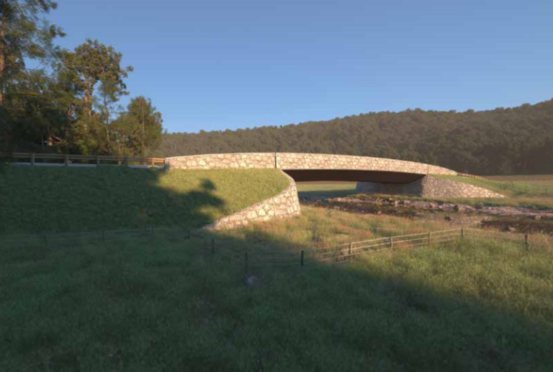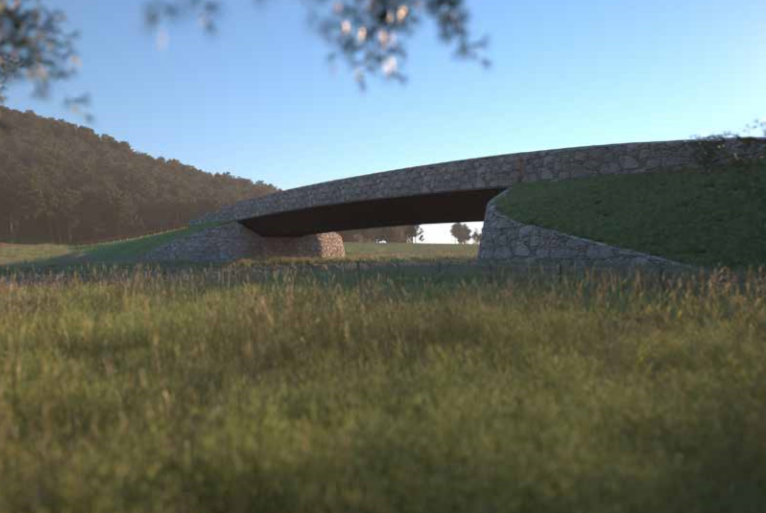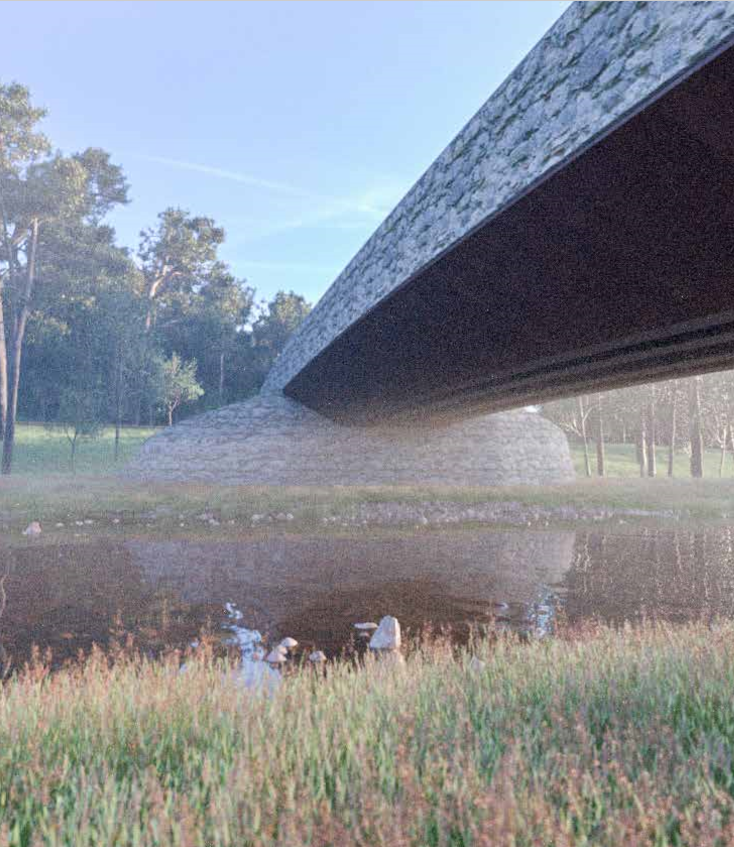New images have revealed the sleek, modern replacement for an ageing north-east bridge.
Built in 1749, on the A939 Ballater to Tomintoul road, Gairnshiel Bridge forms an important link between Aberdeenshire and Moray.
But as pedestrians, horses and carriages have given way to cars, buses and lorries – the crossing has crumbled and struggled under the weight and volume of its traffic.
When repairs are carried out – which have become an increasingly frequent occurrence for many years – the bridge must be closed, leading to lengthy diversions.
Aberdeenshire Council decided last year to build a new bridge to the east of the crossing, in order to preserve the Gairnshiel Bridge, which remains a popular tourist attraction.
Last week the P&J reported on plans to fell 22 trees to make way for the new structure.
Now, concept art for the replacement has been unveiled and shows a more modern, sleek looking crossing, described as “slender” and “bold” by designers.
The images form part of wider plans, submitted to the council last week, for permission for a new 984ft single carriageway road and the bridge itself, which will be about 100ft long.
Planning documents state: “The design is for a low profile bridge which prevents the new structure from appearing too prominent when viewed in connection to the historic structure.”
Gairnshiel Bridge on the A939 in the heart of the Cairngorms National Park and a vital link on the Snow Road is closed for repairs for up to three weeks. Please do NOT try and use it pic.twitter.com/SHvR9moBf4
— GevaBlackett (@G3VAB) May 14, 2018
The new road, planning documents add, will bypass the existing Category A listed bridge nearby downstream, with the existing bridge retained “for non-motorised users only”.
Planning documents add: “There are many different ways of building a bridge, each with its own advantages and disadvantages.
“In this instance the design is for a composite structure making use of the intrinsic characteristics of both steel and reinforced concrete to maximise efficiency and minimise structural depth.”



